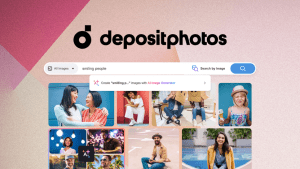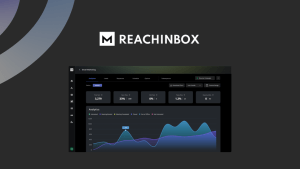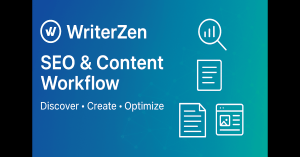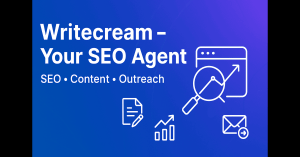Mailchimp is an email marketing strategy platform that offers tools for managing and automating email campaigns. It helps businesses engage with their audience effectively.
Mailchimp provides a comprehensive suite of tools for email marketing. Users can create, send, and analyze email campaigns with ease. The platform offers customizable templates, making it simple to design professional emails. Automation features save time by scheduling emails and targeting specific audience segments.
Analytics tools track performance, offering insights to improve future campaigns. Mailchimp also integrates with various apps and services, enhancing its functionality. Its user-friendly interface makes it accessible for beginners and experts alike. Overall, Mailchimp is a versatile solution for businesses aiming to boost their email marketing efforts.
Credit: discussions.apple.com
Introduction To Mailchimp
Mailchimp is a powerful email marketing tool. It helps businesses reach their audience. This blog will introduce you to Mailchimp.
What Is Mailchimp?
Mailchimp is an email marketing platform. It allows users to create and send emails. Users can also automate email campaigns. It offers tools to track email performance. This helps improve marketing strategies.
Mailchimp provides templates for emails. These templates are easy to use. You can customize them to fit your brand. Mailchimp also supports A/B testing. This helps you find the best email versions.
Why Choose Mailchimp?
- User-Friendly Interface: Easy to navigate and use.
- Automation Features: Saves time with automated emails.
- Analytics Tools: Track and improve email performance.
- Customizable Templates: Personalize emails to match your brand.
- A/B Testing: Optimize your email campaigns.
| Feature | Benefit |
|---|---|
| User-Friendly Interface | Easy to navigate for beginners. |
| Automation | Saves time by automating tasks. |
| Analytics | Provides data to improve strategy. |
| Templates | Customizable to fit your brand. |
| A/B Testing | Helps find the best email versions. |

Credit: www.facebook.com
Setting Up Your Account
Starting with Mailchimp is easy and quick. This guide helps you set up your Mailchimp account efficiently. Follow these steps to begin your email marketing journey.
Creating An Account
Creating an account on Mailchimp is simple. Follow these steps:
- Visit the Mailchimp website.
- Click on the Sign Up Free button.
- Enter your email address, username, and password.
- Click Get Started.
- Check your email for a verification message.
- Verify your email address by clicking the link.
Once your email is verified, your account is ready. You can now log in and start exploring.
Navigating The Dashboard
The Mailchimp dashboard is user-friendly. It has all the tools you need. Here’s a quick guide:
- Campaigns: Create and manage your email campaigns.
- Audience: Manage your email subscribers.
- Reports: Track the performance of your emails.
- Templates: Design beautiful email templates.
- Automation: Set up automated email workflows.
Each section is easy to find and use. You can access them from the top menu.
To get a better understanding, let’s look at a simple table of the dashboard’s main sections and their functions:
| Section | Function |
|---|---|
| Campaigns | Create and manage email campaigns |
| Audience | Manage your subscribers |
| Reports | Track email performance |
| Templates | Design email templates |
| Automation | Set up automated emails |
Take your time to explore each section. This will help you get the most out of Mailchimp.
Building Your Email List
Building your email list is crucial for successful email marketing. A healthy email list ensures your campaigns reach the right audience. Using Mailchimp can make this process easier and more efficient. Let’s explore some essential steps to build your email list using Mailchimp.
Importing Contacts
If you already have a list of contacts, you can import them into Mailchimp. This step is simple and helps you start your campaigns quickly.
Step-by-step process:
- Go to your Mailchimp dashboard.
- Click on “Audience” and select “All contacts”.
- Select the “Import Contacts” button.
- Choose your file type (CSV or TXT).
- Upload your file and click “Next”.
- Map your fields correctly (e.g., Name, Email).
- Click “Complete Import” to finish.
Mailchimp will notify you once the import is complete. Ensure all contacts have given permission to receive emails.
Creating Sign-up Forms
Creating sign-up forms is a great way to grow your email list. These forms allow visitors to subscribe to your newsletters directly from your website.
Steps to create a sign-up form:
- Navigate to the “Audience” tab in Mailchimp.
- Click on “Sign-up forms”.
- Select “Form builder”.
- Customize the form fields as needed.
- Design the form to match your brand.
- Save and publish the form.
You can embed these forms on your website or share the link on social media. Use pop-up forms to capture attention quickly.
Here is an example of the HTML code you can use to embed a form:
Customize this code to fit your needs. Collect only the necessary information to keep the form simple.

Credit: www.facebook.com
Designing Effective Campaigns
Creating compelling email campaigns is vital for engaging your audience. With Mailchimp, you can easily design beautiful and effective emails. This section will guide you through the process.
Using Templates
Mailchimp offers a variety of templates to kickstart your email design. These templates are pre-designed to suit different needs. You can find templates for newsletters, promotions, and more.
| Template Type | Purpose |
|---|---|
| Newsletter | Regular updates |
| Promotional | Special offers |
| Announcement | Important news |
Choosing the right template can save time and ensure consistency. Follow these steps to select a template:
- Log in to Mailchimp.
- Navigate to the “Campaigns” tab.
- Select “Email” and then “Create Campaign”.
- Choose a template that fits your campaign.
Customizing Emails
Customizing your email ensures it matches your brand’s identity. Mailchimp’s editor is user-friendly and allows for extensive customization. You can modify colors, fonts, and images.
- Colors: Use your brand’s color palette.
- Fonts: Choose fonts that reflect your style.
- Images: Add high-quality, relevant images.
Personalization is key to engaging content. Use merge tags to include the recipient’s name or other details. You can find merge tags in the editor under “Personalization”.
Ensure your email is mobile-friendly. Most users read emails on their phones. Mailchimp’s templates are responsive, but always preview your email on different devices.
By following these steps, your email campaigns will stand out. Engage your audience with beautiful and effective emails.
Segmentation And Targeting
Segmentation and targeting are vital in email marketing. They help you reach the right audience. This ensures your message hits home. Mailchimp offers robust features for this.
Creating Segments
Mailchimp allows you to create segments based on various criteria. These include:
- Demographics
- Behavior
- Purchase history
- Engagement levels
You can also combine these criteria. This ensures precise targeting.
Targeting Strategies
Effective targeting strategies can boost your campaign success. Consider these options:
- Personalized content: Tailor messages to specific segments.
- Timed campaigns: Send emails when your audience is most active.
- A/B testing: Test different versions to see what works best.
These strategies can increase engagement and conversion rates.
Automation Features
Mailchi’s automation features make email marketing more efficient. These features allow you to send the right message at the right time. Below, we explore the key automation features of Mailchi.
Setting Up Automations
Setting up automations in Mailchi is straightforward. Follow these steps to get started:
- Login to your Mailchi account.
- Navigate to the Automation tab.
- Click on Create Automation.
- Choose a trigger for your automation, like a new subscriber.
- Set up your email content and schedule.
Mailchi provides a user-friendly interface for setting up automations. You can customize your automations to fit your needs. This ensures you can engage with your audience effectively.
Types Of Automated Emails
Mailchi supports various types of automated emails. Here are some common types:
| Type | Description |
|---|---|
| Welcome Emails | Sent to new subscribers to introduce your brand. |
| Abandoned Cart Emails | Remind customers to complete their purchase. |
| Birthday Emails | Sent on a subscriber’s birthday with special offers. |
| Re-engagement Emails | Target inactive subscribers to bring them back. |
Using these automated emails helps maintain customer engagement. They also boost your email marketing results.
Analyzing Campaign Performance
Analyzing your campaign performance in Mailchimp is crucial. It helps you understand what works and what doesn’t. This ensures your email marketing efforts are effective.
Understanding Metrics
Metrics are the backbone of campaign analysis. They give you insight into your email’s success.
- Open Rate: The percentage of recipients who opened your email.
- Click-Through Rate (CTR): The percentage of recipients who clicked a link in your email.
- Conversion Rate: The percentage of recipients who completed a desired action.
- Bounce Rate: The percentage of emails that were not delivered.
- Unsubscribe Rate: The percentage of recipients who unsubscribed.
Understanding these metrics helps you measure the effectiveness of your campaigns.
Improving Results
Once you understand your metrics, you can work on improving them.
- Segment Your Audience: Send targeted emails to specific groups.
- Craft Engaging Subject Lines: Make your subject lines catchy and relevant.
- Use A/B Testing: Test different versions of your email to see what works best.
- Optimize Send Times: Send emails when your audience is most active.
- Personalize Content: Tailor your emails to each recipient’s interests.
Use these tips to improve your email campaign results.
Advanced Tips And Tricks
Unlock the full potential of Mailchimp with these advanced tips and tricks. Elevate your email campaigns to new heights. Learn how to use A/B Testing and integrate with other powerful tools.
A/b Testing
A/B Testing allows you to compare two versions of an email. This helps you identify which one performs better.
Here is how you can set up A/B Testing in Mailchimp:
- Create two versions of your email.
- Select the variables you want to test (subject line, content, etc.).
- Send both versions to a small portion of your audience.
- Analyze the results and choose the best-performing version.
Use A/B Testing to improve open rates and click-through rates. Small changes can make a big difference.
Integrations With Other Tools
Mailchimp integrates with many other tools. This makes your workflow seamless and efficient.
| Tool | Integration Benefits |
|---|---|
| Google Analytics | Track email performance and website traffic. |
| Shopify | Sync customer data and automate product recommendations. |
| Zapier | Connect Mailchimp with 1,000+ other apps. |
Integrate Mailchimp with Google Analytics to get better insights. Connect with Shopify to boost your e-commerce efforts. Use Zapier to automate tasks and save time.
Frequently Asked Questions
What Is Mailchi?
Mailchi is a powerful email marketing platform. It helps businesses manage mailing lists and create email campaigns. It’s user-friendly.
How Does Mailchi Work?
Mailchi works by allowing users to create, send, and track email campaigns. It offers templates and analytics.
Is Mailchi Free To Use?
Mailchi offers a free plan. The free plan includes basic features and limited email sends. Paid plans are available.
Can I Automate Emails With Mailchi?
Yes, Mailchi offers automation features. You can set up automated email sequences. It’s great for drip campaigns.
Conclusion
Mailchimp offers robust features for all your email marketing needs. It simplifies campaign management and boosts engagement. With its user-friendly interface, even beginners can achieve professional results. Give Mailchimp a try and elevate your email marketing efforts today. Don’t miss out on this powerful tool for growing your business.






